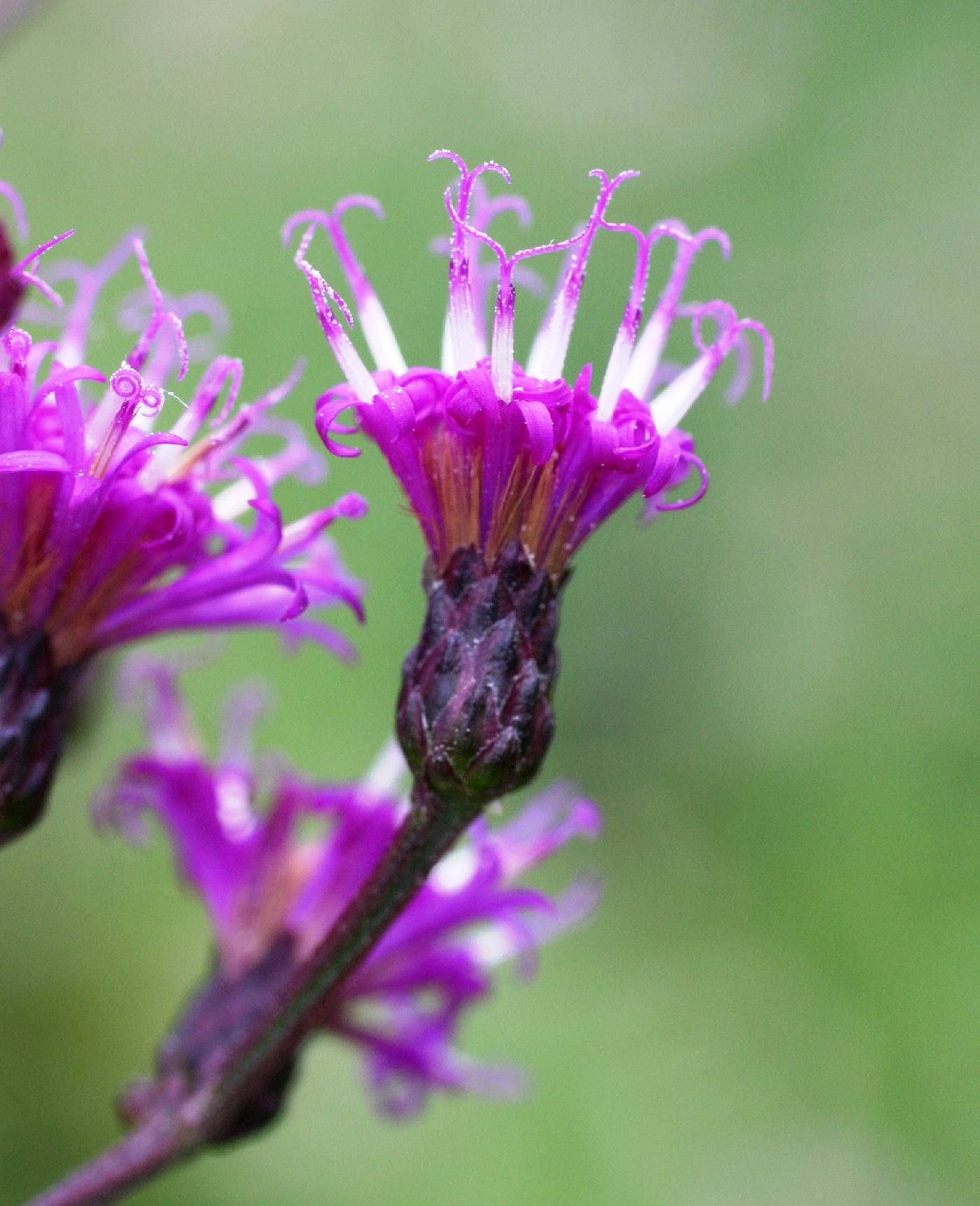|
Family: Asteraceae |
Perennials, 2-20(-30+) dm (rhizomatous or not). Leaves usually mostly cauline (rarely mostly basal or basal and cauline); sessile or petiolate; blades ovate, elliptic, lanceolate, oblanceolate, spatulate, linear, or filiform, bases usually ± cuneate (rounded-truncate in V. pulchella), margins usually toothed (rarely entire), apices acute to attenuate, abaxial faces usually ± scabrellous to strigillose or tomentose to pannose, sometimes glabrate or glabrous, usually resin-gland-dotted (sometimes ± pitted), adaxial faces ± scabrellous or glabrate, sometimes resin-gland-dotted (rarely pitted). Heads discoid, ± pedunculate, not subtended by foliaceous bracts, (6-)40-100+ in ± corymbiform to paniculiform arrays (6-)10-25+ cm diam. Involucres ± campanulate to obconic or hemispheric, 3-8(-11+) mm diam. Phyllaries 18-70+ in 4-7+ series, the outer ovate to lanceolate or subulate, inner ± lanceolate to oblong, all ± chartaceous, margins entire, often ciliolate, tips rounded (then sometimes apiculate), or acuminate, subulate, or filiform, faces glabrous or sparsely strigillose to tomentose, sometimes ± gland-dotted. Florets 9-30(-65+); corollas usually purplish or pink (rarely white), tubes longer than funnelform throats, lobes 5, lance-linear, ± equal. Cypselae ± columnar, sometimes arcuate, 8-10-ribbed, glabrous or ± strigillose to hirtellous, often resin-gland-dotted; pappi persistent, of 20-30+ outer, erose to subulate scales or bristles plus 20-40+ inner, longer, subulate to setiform scales or bristles. x = 17. The circumscription of Vernonia adopted here follows that of H. Robinson (1999). Vernonias hybridize; almost every one of the species recognized here has been noted as sometimes hybridizing with one or more others. Putative hybrid plants are usually intermediate between parentals in some traits; such plants may not 'key' satisfactorily to any of the species treated here. Some putative hybrids have been named. Vernonia guadalupensis is 'without much doubt a hybrid of V. baldwinii Torrey and V. lindheimeri Engelmann & Gray' (L. H. Shinners 1950); V. vulturina Shinners (known only from the type collection) may be a product of V. baldwinii × V. marginata; V. ×georgiana Bartlett may refer to V. acaulis × V. angustifolia. Additional putative hybrids (S. B. Jones 1964) are V. ×concinna Gleason (V. ovalifolia × V. angustifolia), V. ×dissimilis Gleason (V. altissima × V. angustifolia), and V. ×recurva Gleason (V. pulchella × V. angustifolia). In the key and descriptions, 'l/w = ' refers to lengths divided by widths for blades of leaves; lengths of phyllaries include subulate to filiform tips (if any).
Heads discoid, the fls all tubular and perfect, purple (white); invol of numerous ±appressed, imbricate bracts, in our spp. constricted at the summit; receptacle flat or convex, naked; style-branches slender, gradually tapering distally, minutely hispidulous outside, smooth inside, inconspicuously stigmatic near the base within; achenes (in ours) ribbed, commonly hairy; pappus double, the inner of numerous long, slender bristles, the outer of short bristles or short narrow scales; our spp. perennial herbs, usually simple to the infl; lvs alternate, in our spp. sessile or subsessile and serrate or entire; heads in ours ±numerous, medium-sized, in corymbiform cymes. 1000, N. Amer., S. Amer., Afr., Madagascar, and se. Asia. Our spp. bloom in late summer and fall. Hybrids abound. A hybrid swarm in the Midwest, derived chiefly from V. missurica and V. gigantea, but also involving V. baldwinii and V. fasciculata, has been called V. ةllinoensis Gleason. Gleason, Henry A. & Cronquist, Arthur J. 1991. Manual of vascular plants of northeastern United States and adjacent Canada. lxxv + 910 pp. ©The New York Botanical Garden. All rights reserved. Used by permission. |


